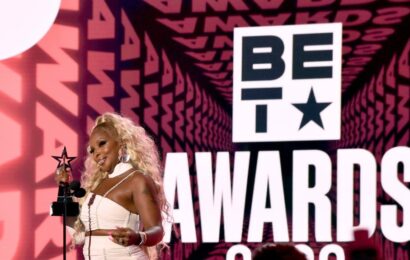As is the case with most things related to toilet paper, this might get a little messy.
An ad for Procter & Gamble’s Charmin toilet tissue ran adjacent last week on Peacock to a “Saturday Night Live” sketch making fun of the product’s long-running ad campaign that features blue bears talking about the benefits of keeping their posteriors clean, and in doing so, sparked a new round of online chatter about how involved advertisers can get in “SNL” content decisions.
They typically can’t. NBC says the appearance of the ad next to the skit was “coincidental,” and not put in place at the request of Procter & Gamble, which has manufactured Charmin since acquiring the product in 1957. Procter, one of the nation’s largest TV advertisers, did not respond to a query seeking comment.
Its commercials have not been the most common sight during “SNL,” which has long counted Apple, consumer-technology marketers and movie studios as some of its biggest sponsors. In 2021, Procter spent just $5.8 million on advertising (not a grand sum in the world of TV commercials) during the show, according to Kantar, a tracker of ad spending. The average cost of a 30-second TV ad on “SNL” last season was $164,000, according to Standard Media Index.
To be sure, the Charmin ad did not appear next to the “SNL” sketch on NBC itself, only during the live stream of the show on Peacock. NBC viewers saw an ad for the David O. Russell movie “Amsterdam.’ Commercials on streaming hubs are often dispatched differently to various households, with factors such as geographic location and purchasing habits utilized as part of a distribution that hinges on algorithms.
As such, the appearance of the ad points to a new challenge TV networks are likely to face as more of its programs are consumed via broadband streaming. Advertisers who desire a strong link to a specific program — something that often takes the form of a product placement in the show or bespoke commercials around it — usually pay a premium to do so. In the world of streaming, however, ads can be sent based on the particular characteristics of the audience, rather than the desires of the network or producer.
In the past, producers at “Saturday Night Live” have expressed caution about how viewers perceive ad support for the show. That has ramped up in recent years as “SNL” cast members have gained new permission to take part in ad campaigns — a freedom their counterparts from past seasons have not always been granted. Advertisers using current cast members have been told their commercials cannot run during original broadcasts of the show itself, out of concern that viewers might think the ads and the program are intertwined.
Sometimes, mistakes are made. Last season, for example, NBC ran an Old Navy ad featuring former cast member Aidy Bryant twice during a new “SNL” episode, spurring what one person familiar with the matter said at the time was a review as to why it happened. In 2015, American Express was allowed to move one of its commercials next to a “SNL” sketch spoofing it, the direct result of NBC giving a heads-up to Mindshare, the company’s media buyer at the time.
Lorne Michaels, “SNL’s” executive producer and longtime guiding light, takes such matters seriously. “I don’t like it, but if someone is going to be well paid and it’s not next to us in the show, then I’m OK,” he told Variety in 2017 of the cast appearing in commercials. When it comes to weaving bespoke ad messages into or alongside “SNL,” he is “less welcoming in the sense that the integrity of the show is really all that matters to me,” he said at the time, adding that “You can’t make fun of it, and be with it” simultaneously.
As more viewers move to live-stream “SNL” rather than watch it on traditional TV, NBC will have to decide whether to maintain its own oversight over such things, or let artificial intelligence hold sway.
Read More About:
Source: Read Full Article







